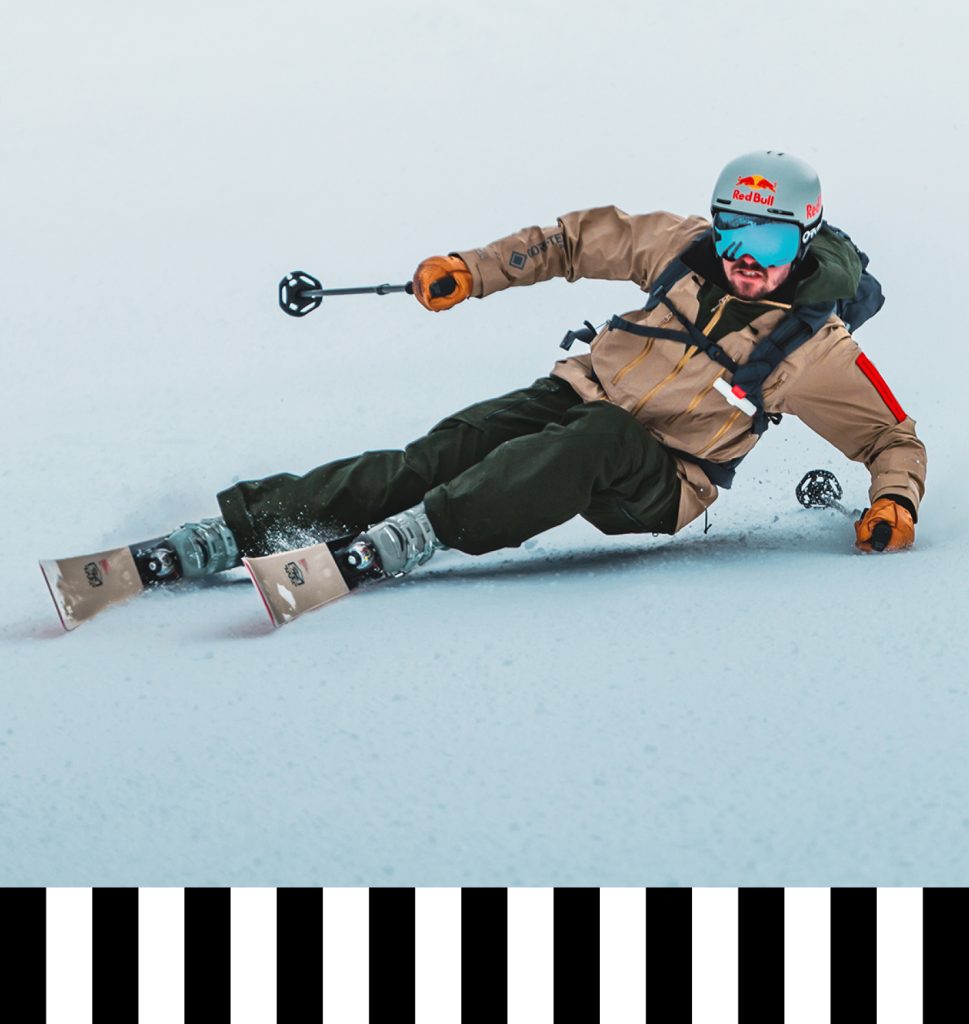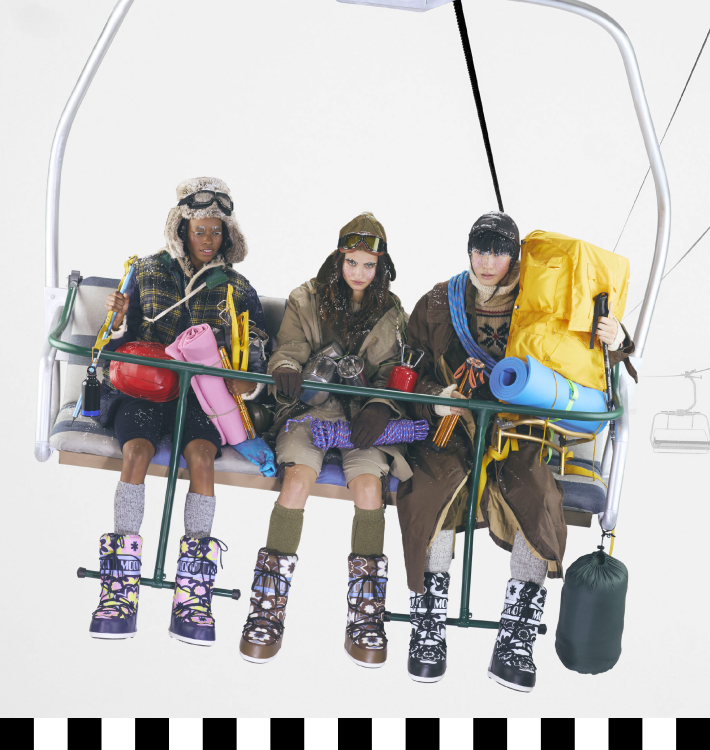Whether you are planning a bike ride, a day of hiking, or an extended trekking adventure, the secret lies in finding the travel companion – the backpack – that maximizes comfort without sacrificing efficiency.
In this article, we will explore how to choose the ideal backpack based on the type of activity, taking into account the volume and features of men’s and women’s models. We will offer practical tips and strategies to ensure you are perfectly equipped for your next adventure.
How to choose a backpack based on the activity you plan to do
Choosing the right backpack for your intended activity is essential to getting the most out of your outdoor adventures.
If you enjoy hiking and are looking for a peaceful day in nature, it is important to choose a backpack that is lightweight and compact. Hiking backpacks are designed to carry the essentials: water, snacks, a first aid kit, and an extra layer of clothing. Features such as ventilation systems increase comfort, making them ideal for hot days.
For trekking, which is often multi-day with overnight camping, a backpack that can carry everything needed to survive in the wilderness is essential. Trekking backpacks, such as those offered by the brand Deuter, are designed to maximize load distribution and minimize snags, thanks to elongated shapes that facilitate movement through vegetation.
For cycling, a backpack that hugs your back is essential for stability and comfort. These packs should have adjustable straps for a secure fit and include reflective elements for increased visibility in low light conditions. A good ventilation system and accessible pockets for tools further enhance the riding experience, making the cycling backpack a must-have accessory for any cycling excursion.
For everyday use, such as commuting to work or school, a less technical but high quality backpack is essential. Backpacks from the Cotopaxi brand, available at the Lagazoi store, are a stylish choice for carrying everything you need. With their vibrant and colorful designs, these backpacks add a sporty and casual touch to your look.
How to determine the ideal volume for your pack
The choice of backpack volume, measured in liters, is crucial to adapting to your travel or hiking needs.
- Backpacks up to 10 liters: offer a compact solution that is ideal for running or short walks. These packs have enough room to carry essentials like a light jacket, snacks, and a smartphone. For light cycling, where all you need is a water bottle and a few other items, Lagazoi presents a selection of extremely compact Osprey backpacks. These packs are designed to hug your back for comfort and stability even during the most intense activities.
- Backpacks up to 25 liters: The most popular for day trips, these backpacks are perfect for both mountain and urban environments.
- Backpacks up to 40 liters: Extremely popular for multi-day hikes due to their advanced back support systems that improve weight distribution. They are ideal for carrying clothing and gear for short trips or weekends.
- Backpacks up to 70 liters: This size is ideal for those who go on long trips or treks and need plenty of space for gear, clothing, tent, sleeping bag, and stove. Backpacks in this category are designed to meet the needs of backpackers and hikers on extended adventures.
- Backpacks over 70 liters: so-called expedition backpacks, designed for those who travel or explore in remote environments where it is necessary to carry several seasons of clothing, camping equipment and everything needed for long periods of time away from civilization.
Ergonomic and structural differences between men’s and women’s backpacks
The differences between men’s and women’s backpacks stem from ergonomic and structural adaptations designed to optimize comfort and functionality for different anatomies. Here are some of the main aspects that differentiate the two types:
- Back length: women’s packs tend to have a shorter back to better accommodate the average female torso length, providing a more precise and comfortable fit.
- Carrying system: shoulder straps and ergonomic straps in carrying systems are designed with sensitivity to the differences in body structure and weight distribution between the sexes.In advanced models, it is common to find an elastic strap that connects the shoulder straps, providing optimal stability and allowing the torso to move freely during strenuous physical activity. Particularly in women’s models, these straps are also adjustable in height, allowing precise adjustment to maximize comfort and minimize any unwanted chafing or pressure. The Deuter Futura 25 SL W backpack is an excellent example of a backpack that incorporates these features.
- Waist belts: recognizing the differences in pelvic shape, women’s backpacks often feature tailored waistbelts that provide more support and comfort while reducing pressure on sensitive areas.
- Volume: women’s packs may have a slightly reduced volume compared to men’s versions to compensate for differences in back length and carrying system. This adjustment keeps the pack in proportion to the body, preventing overloading and improving weight management.
Key features of an outdoor backpack
When it comes to choosing the ideal backpack for your adventures, it may not be enough to simply evaluate its use and volume. It is important to consider other key features that can make or break your experience:
- Waterproofing: Although many backpacks are highly waterproof, you should take extra measures to keep them dry. A cover such as the Deuter Rain Cover is essential to protect your pack and its contents in heavy rain. This accessory covers the most vulnerable areas, preventing water from penetrating the outer layer and preventing mildew. Starting at 30 kg, you will often find an integrated raincover that offers additional protection without adding significant weight.
- Ventilation: An effective ventilation system can greatly improve your comfort, especially on hot days or long hikes. Advanced technologies such as the Airstripes system in Deuter’s cycling backpacks not only ensure optimal ventilation, but also a stable fit, key factors for overcoming the toughest challenges.
- Organized space: multiple compartments, easy-access pockets and hydration management solutions allow you to organize your load efficiently and access your gear when you need it.
Learn about proper backpack organization
Effective trekking backpack organization is essential for maintaining balance and reducing back strain, especially on rough terrain. Adjustable straps and lumbar straps designed to optimize weight distribution make the load more manageable and reduce pressure on the back, preventing pain and muscle fatigue. Typically, a well-trained hiker can carry up to 20-25% of his or her body weight for extended periods of time.
The key to optimal comfort while hiking is to keep the backpack’s center of gravity as close to the body as possible, ideally in line with the shoulders. This allows the pack to move in sync with you, minimizing the risk of imbalance.
Depending on the difficulty of the trail, it is helpful to adjust the position of the pack: higher for easier trails and lower and closer to the body for more challenging trails. This makes it easier to maintain balance. Adopting these strategies will not only improve your comfort, but also your safety while hiking.
How to prepare a backpack over 30 liters
To optimize the organization of a backpack with a capacity of more than 30 liters, it is essential to take a strategic approach to load arrangement. Here is a quick guide to maximize space and comfort:
The bottom of the pack is ideal for light but bulky items such as sleeping bags, lightly padded clothing, and other items that do not require immediate access. Placing them on the bottom helps stabilize the load without affecting the center of gravity.
Use the top to stow medium-weight items that you may need to reach quickly, such as extra layers of clothing or a rain kit. This strategic placement gives you easy access to these items without having to dig deep into your pack.
Place heavier items, such as a tent, food, and heavy clothing, close to your back and at shoulder height. This arrangement helps distribute weight evenly, promotes proper posture, reduces fatigue, and improves balance while walking.
Reserve the outside pockets of the pack for items you use frequently or need to access quickly, such as maps, snacks, sunglasses and sunscreen. Placing them on the outside provides quick and convenient access and allows you to keep the inside of the pack organized.
Avoid overloading your pack by placing too many items on the outside, as this can cause snagging and increase exposure to wind and moisture. To keep the pack compact and manageable, limit the use of exterior space to essential items, and distribute weight evenly in the side pockets to avoid imbalance.
Helpful Tip: Using internal pockets to divide and categorize items not only makes it easier to organize, but also to find them without having to empty the entire pack. Using waterproof pockets adds an extra layer of protection from moisture and is an effective alternative to an outer rain cover.
How to organize a first aid kit to keep in your backpack at all times
Preparing an outdoor first aid kit is an essential step in ensuring your safety during your adventures. To be prepared for different types of emergencies, the kit should contain everything you need to treat minor injuries on your own and provide temporary care for more serious injuries while waiting for rescue. For maximum functionality, it is essential that the kit be organized in a soft, water-resistant container in an easily accessible part of your pack.
Here is a list of essential materials to include in your kit:
- A signal whistle to attract attention in an emergency.
- Individually sealed sterile gauze pads to cover and protect wounds.
- Gauze bandages and an elastic bandage to immobilize injuries.
- A roll of bandages and plasters of various sizes for small wounds.
- Blister plasters to protect feet during long walks.
- Absorbent cotton, scissors and tweezers for cleaning and dressing wounds.
- A tourniquet to control bleeding.
- Disinfectants and ointments to treat bruises, insect bites or skin irritations.
- An isothermal survival blanket to maintain body heat in case of shock.
- Eye drops to soothe eye irritation.
- Latex gloves to protect against contamination.
- Medication for pain or other specific ailments.
Remember to check the kit periodically to make sure all items are in good condition and to check expiration dates on medications. Adapt the contents of the kit to your needs and the activity you practice.


